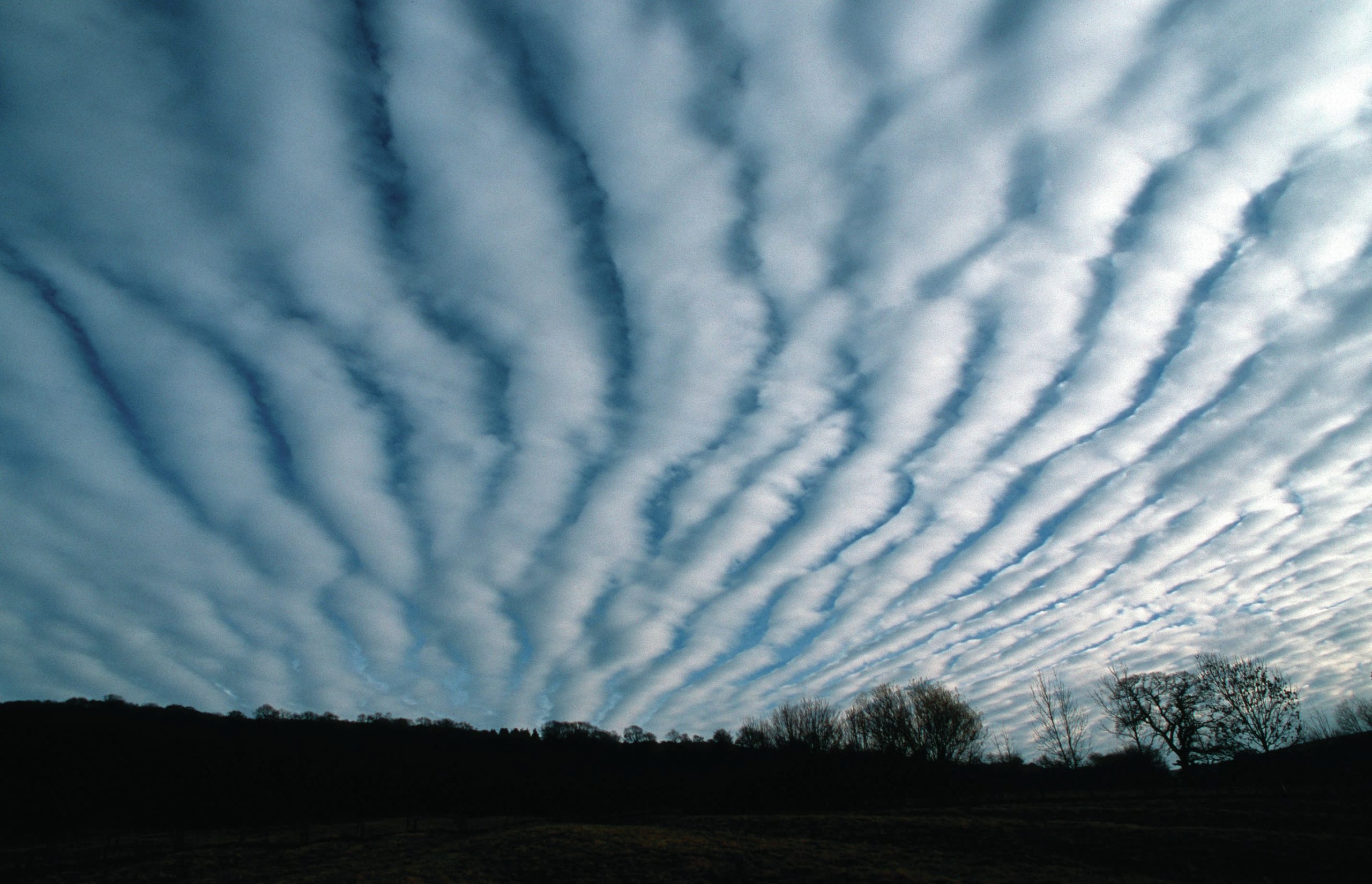
Atmospheric waves arise when parcels of air undergo simple harmonic motion. The atmosphere can be modelled as an ideal gas, which explains how clouds are formed that make the waves visible. The Earth’s rotational motion drives the formation of the longest atmospheric waves.
Waves in the atmosphere have a major impact on the climate and weather we experience. They can transport energy and momentum over large distances. Their wavelength and amplitude range from small local disturbances (Figure 1) to large-scale disturbances in the global winds, where a few wavelengths take you round the Earth. Waves are responsible for the interaction between the upper and lower atmosphere, and for a lot of the interaction between different places on the surface of the Earth. For example, the reason why the El Niño/La Niña weather patterns in the tropical Pacific cause the entire planet to be anomalously warm or cold is the transport of information around the planet by large-scale waves. This article looks at some examples of waves in the atmosphere.
Your organisation does not have access to this article.
Sign up today to give your students the edge they need to achieve their best grades with subject expertise
Subscribe




